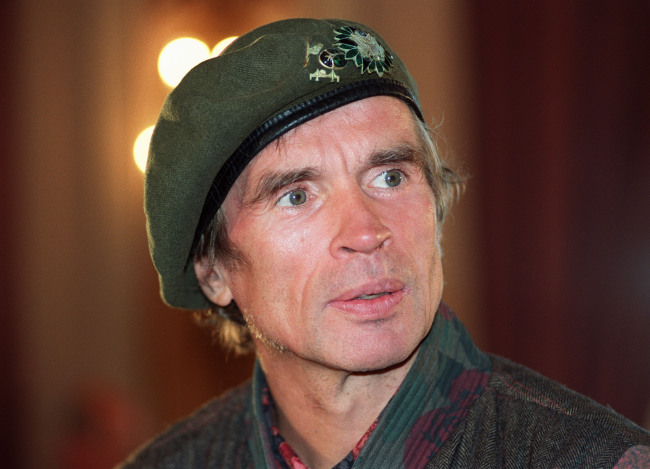PARIS (AFP) ― Twenty years after his death, Rudolf Nureyev’s legacy still lights up the world of ballet as brilliantly as the flamboyant performances which once illuminated the greatest stages.
“As long as they are putting on my ballets, I will live on,” Brigitte Lefevre, dance director of the Paris Opera, recalls Nureyev saying in the years before the ravages of AIDS finally claimed him, aged 54, on Jan. 6, 1993.
A fitting epitaph for a performer who went from being the outstanding male dancer of his generation to a choreographer whose influence resonates throughout modern ballet.
 |
Soviet-born ballet dancer Rudolf Nureyev is shown during his time as part of a repetition with the Basse-Normandie instrumental ensemble in Deauville, western France in 1991. (AFP-Yonhap News) |
“He redefined the role of the male dancer,” said ballet historian Helene Ciolkovitch. “He took it beyond that of simple support, creating a more balanced partnership with the ballerina.”
“When you danced alongside him, you really had to give everything. If you didn’t you couldn’t keep up,” recalled Noella Pointois, one of Nureyev’s numerous celebrated on-stage partners. “It was a huge thing, dancing with a star like him.”
Nureyev was also famously demanding as a director. “He made it tough for dancers,” smiles Lefevre in a reference to the enhanced variation and tempo that are characteristic of Nureyev’s productions.
In his six years (1983-89) as dance director at the Paris Opera, he bequeathed to the world his own versions of the major works of Marius Petipa, the 19th-century creator of “Don Quixote,” “Sleeping Beauty,” “La Bayadere” and countless other standbys of the ballet repertory.
“He took these pieces that had been created in Russia and updated them using modern choreographic technique, without breaking with their classical roots,” said Ciolkovitch.
The only son of a Red Army official, Nureyev was famously born, in 1938, on the Trans-Siberian express while his mother was en route to visit her husband in the Siberian port of Vladivostock.
His passion for dance, and ballet in particular, was born at the age of six and he went on to become one of the former Soviet Union’s best-known artists as the leading dancer of the Kirov ballet in Leningrad ― as St. Petersburg was then known.
With such status came the freedom to travel and Nureyev made the most of it, applying the same energetic approach that made him such a charismatic performer to getting the most out of the nightlife on offer in Paris and London.
His increasingly high profile did not go down well with the communist authorities and, having been ordered back to Moscow from a Kirov tour in 1961, he decided not to get on the plane, instead pleading, successfully, to be granted political asylum.
The French authorities complied but it was Britain that saw the best of Nureyev as a dancer, most famously in his legendary partnership with Margot Fonteyn at the Royal Opera House.








